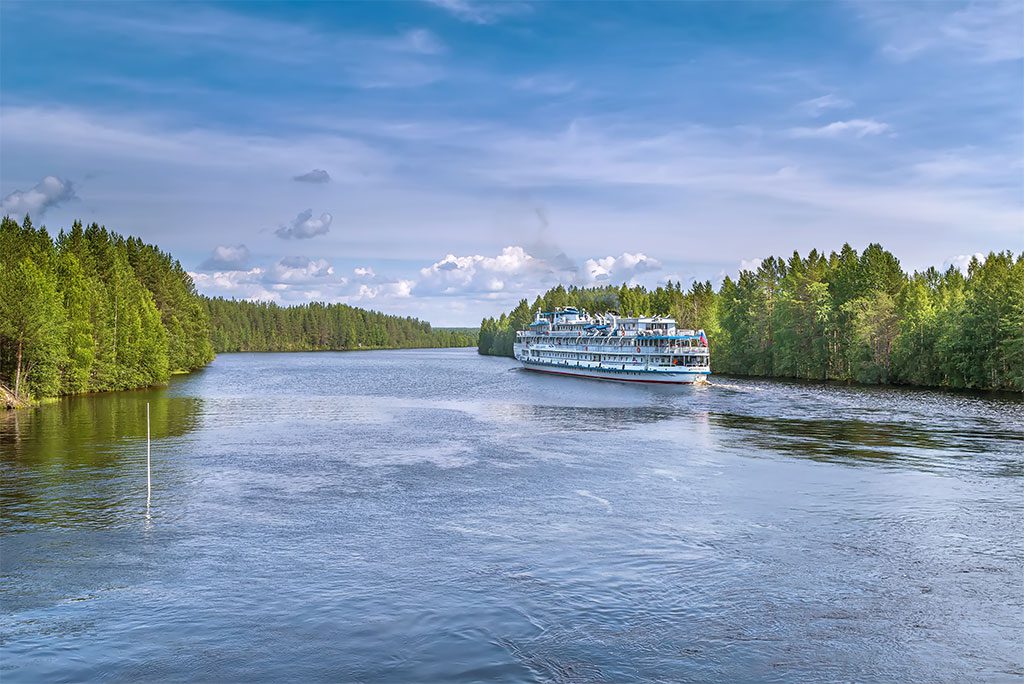The Oceana Cruise Ship, Marina—a Baltic cruise—visits seven countries and nine spectacular ports in only 10 days.
The Oceana Cruise Ship, Marina—a Baltic cruise—visits seven countries and nine spectacular ports in only 10 days.
You’ve been traveling for just 10 days, yet you’ve already seen seven different countries and made nine memorable stops. Despite the Baltic’s crown jewel, the exquisite Russian city of St. Petersburg, being off the itinerary for the foreseeable future, Oceania Cruises illustrates that sailing the Baltic is still a fantastic alternative.
Our Northern Realms voyage took us to the coasts of Germany, Denmark, Sweden, Finland, Lithuania, Latvia, and Estonia, out of the nine countries that border the Baltic Sea. The only country not represented was Poland; our stop in Gdansk was abruptly canceled a week before we were to leave for Russia for unknown reasons.
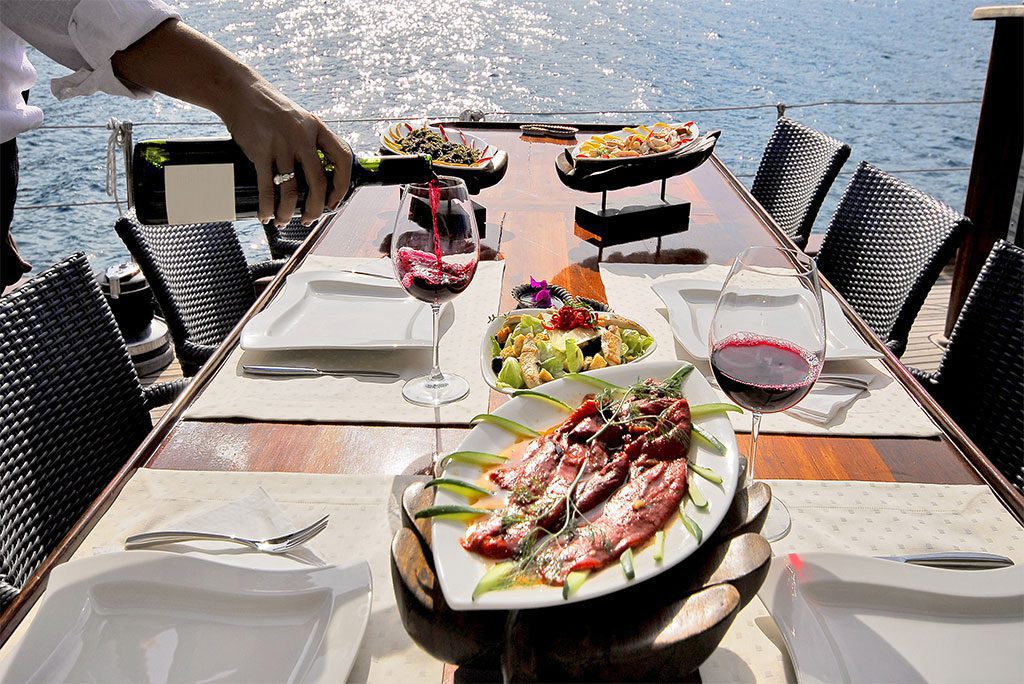
Although our 1,250-passenger ship, the Marina, was not at capacity, passengers were unafraid to disembark and experience the bustling local cultures of the ports we visited, despite the fact that Oceania is a luxury cruise line catering mostly to Americans.
The laid-back atmosphere on board was matched by the delectable cuisine (it’s almost impossible to have a lunch without lobster, and steaks are in plenty).
Unlike on many other cruise lines, you won’t have to pay extra in the ship’s specialty restaurants like Polo Grill (steaks with a whole lobster!). or Toscana (tagliatelli with half a lobster), Jacques (lobster thermidor), or Red Ginger (lobster pad Thai).
Marina is at the heart of Oceania’s East Coast country club vibe, with its subtle pale wood pool deck, pristine white towelling covered loungers, and Waves Grill, where guests can order cooked-to-order Alaskan salmon or soy-ginger marinated ahi tuna burgers alongside varied beef options for a leisurely lunch that stretches into the afternoon.
Every inch of the hotel is decorated with creative artwork, from the walls to the bars. British performers Tim Abel, a talkative, fast-paced pianist, and Philippa Healey, a vocalist and former star of Les Mis in London, provided the evening’s entertainment.
The atmosphere on board is casual and refined; passengers should not wear shorts to dinner, but bowties are not required either, making it an ideal location to rest and refuel between days of sightseeing.
Day 1 – from Copenhagen
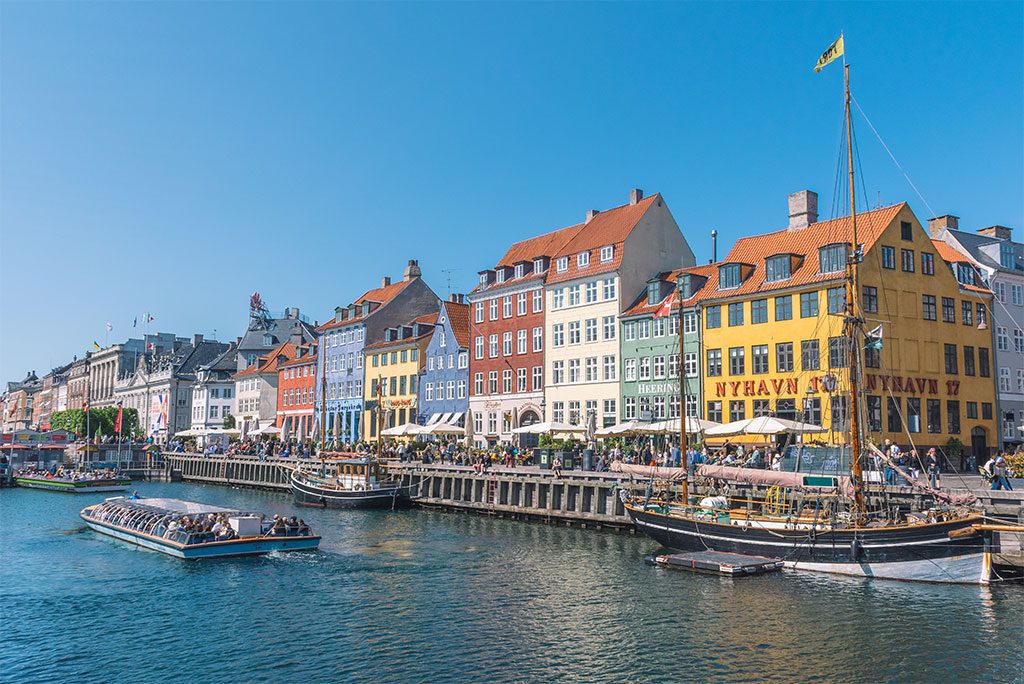
The flight to Copenhagen is short, and we arrive just in time to get a peek at the city on our way to the port. Before leaving, have lunch at the outdoor Horizons buffet and have the classic seafood bouillabaisse. The Øresund Bridge, which links Copenhagen, Denmark, with Malmo, Sweden, and which features prominently in the Scandi police thriller The Bridge, was our supper destination. The bridge falls into a little island, but we sail around it rather than beneath it since part of the 10-mile passage takes place in a tunnel.
Day 2 – Kiel, Germany

When traveling from the North Sea to the Baltic, the Kiel Canal emerges at Kiel, Germany. During our trip to the canal locks, we saw cargo ships passing through in a calm and orderly manner. The Laboe Naval Memorial can then be seen along the shore; it is a somber 236-foot brick tower with a sloping back that pays tribute to sailors who have died at sea. A stairway under the parade field passes a subterranean hall of remembrance and then emerges at a modern museum telling the narrative of both German and British warriors among models of ships. The view from the top is a stunning combination of forest and water.
Day 3 – Bornholm, Denmark
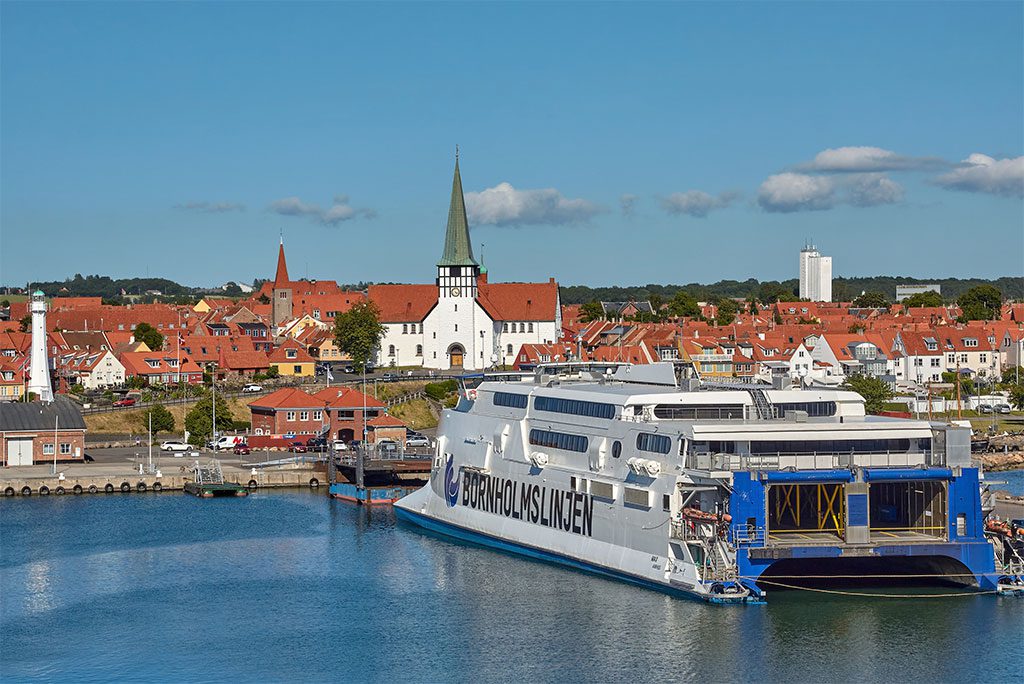
Today is the day we were supposed to be in Gdansk, but instead we’re on the peaceful, agricultural Danish Island of Bornholm, where we’ll be making twice as many port calls in 2022. A pair of F-16 fighter jets were recently stationed here to deter trespassers, and their arrival reportedly disrupted the tranquility. But all is calm as we tour the largest vineyard in Denmark, Lille Gadegård.
Joke-telling owner Jesper Paulsen seems to be as indifferent to the world as his gigantic pig as he feeds it a bottle of Coke among parading peacocks. We try both red and white wines, as well as a sparkling strawberry wine and a honey schnapps, a heavenly blend of grape and the honey from his own hives.
At Hallegaard sausage manufacturers, we relax in the sun and snack on salami-like delights on crusty rye bread as part of our Bornholm tasting tour.
Day 4 – Visby, Sweden

The Swedish Island of Gotland is located in the middle of the Baltic. It is home to the walled medieval harbor town of Visby, a Unesco World Heritage Site. We’re in the middle of the Medieval Festival, complete with hog roasts and costumed revelers, and the streets are littered with crumbling church foundations and cobblestones. The atmosphere is eerie, like something out of an early Dr. Who episode, as people in gaiters and white bonnets walk somberly through the streets.
Day 5 – Klaipeda, Lithuania
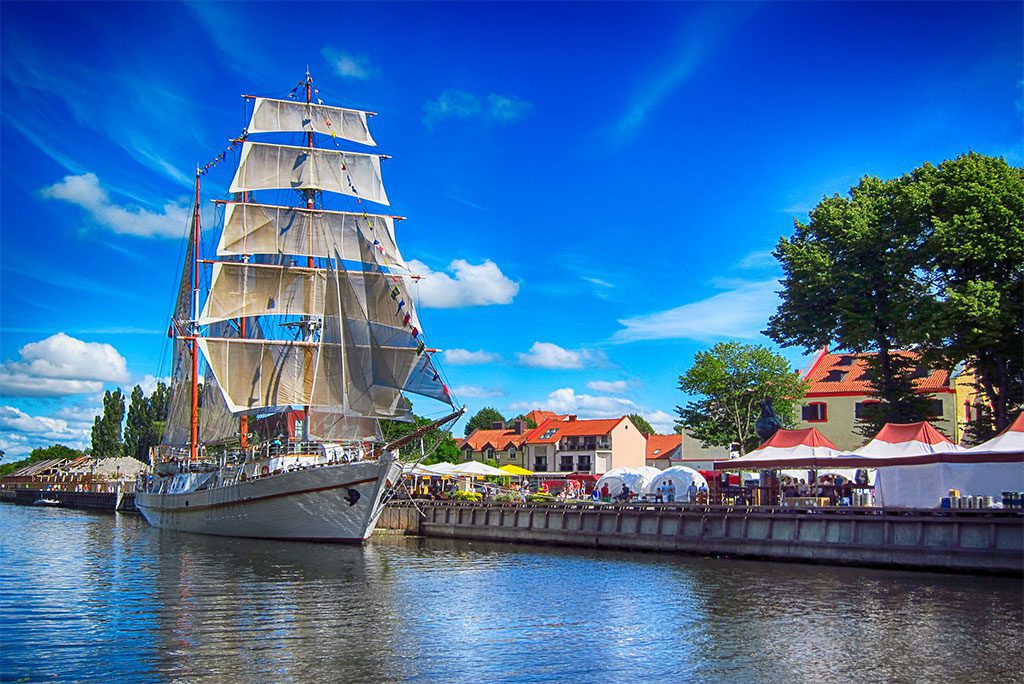
The Lithuanian city of Klaipeda has been passed back and forth between the Russians, the Swedes, and the Germans throughout history. The Curonian Spit stretches across the harbor and is protected by Unesco for its 60 miles of beach, dunes, pine forest, and small towns; near its midpoint, the Spit joins the independent Russian region of Kalininagrad.
Traveling by e-bike, we cross a ferry crowded with tourists to reach the spit, a popular destination known for its beaches that appear as undeveloped as the California coast, its abundance of ancient structures, and the Lithuanian Sea Museum, home to a collection of aquariums and a family of pelicans that make their home in the moat.
Day 6 – Riga, Latvia
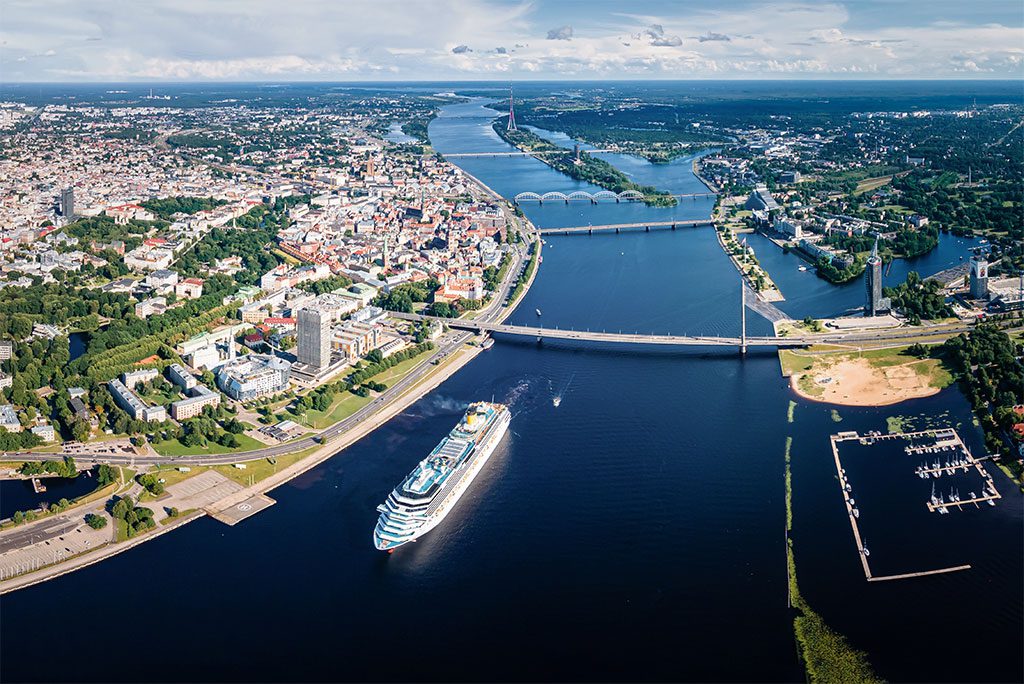
Riga, the capital of Latvia, is teeming with Art Nouveau structures from the early 20th century, many of which were designed by Russian architect Mikhail Eisenstein. Zana, our vivacious tour guide, leads us along Albert Street, which is lined with art, shows us around some corners where we find even more gems, and then takes us inside the National Museum of Art. On our minibus tour, Zana points out the Victory Monument, a 260-foot-tall Soviet chest-beater on the other side of the Daugava River.
She is even more ecstatic than before and informs us that the city will soon be dismantling the monument, which the people refer to as the “Occupation Monument.” She inquires as to whether or not we’d want an up-close look, and if so, our driver—who calls it an unprintable moniker associated with Putin—makes a quick U-turn so that we may get over the park’s barricades and past the patrolling officers.
Afterwards, we take a stroll along City Canal, which winds through gardens and past opulent buildings before culminating at the Freedom Monument, a breathtaking sight that features a soaring pillar topped by a female statue holding her arms high in tribute to the victims of the War of Independence that ensued after Russia’s invasion in 1918.
The monument had disappeared within two weeks, and the shocking footage of its collapse was posted on the BBC website.
Day 7 – Tallinn, Estonia
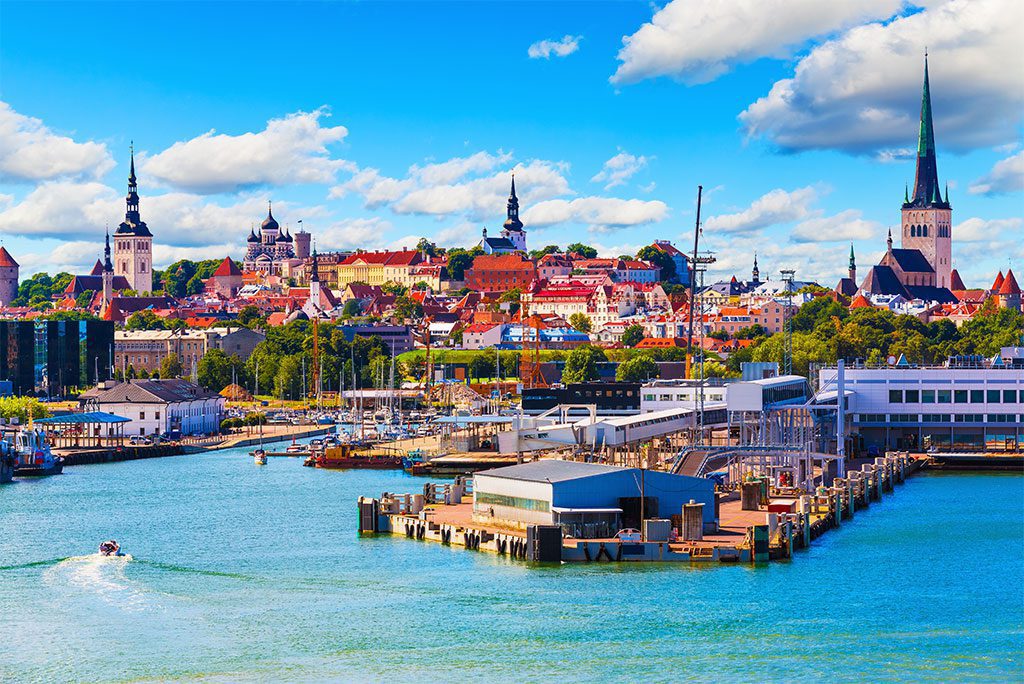
Restaurants in Tallinn, Estonia’s capital, post harsh remarks against Russian President Vladimir Putin, making the throngs of joyful visitors, most of whom are off on a flotilla of cruise ships, giggle. The country has been ruled by the Danes, the Swedes, and the Prussians, and it shares a border with Russia for 180 km.
Under the Kiek, the tallest medieval tower in the Baltic, we explore the fascinating earthwork tunnels, created in the 16th century to allow soldiers to move around securely.
Despite this, the contemporary world is ever-present; our teenage guide tells us that in 1944, the bunker saved 1,000 civilian lives when 300 Russian bombers devastated part of the city to upset German occupiers, drawing parallels between this and Russia’s “revenge” assaults in Ukraine.
Walking through the busy retail area, we are respectfully informed that Estonia did not acquire its independence in 1991 but rather regained it, having been a democracy from 1918 until 1940 before falling under Russian rule.
Day 8 – Helsinki, Finland
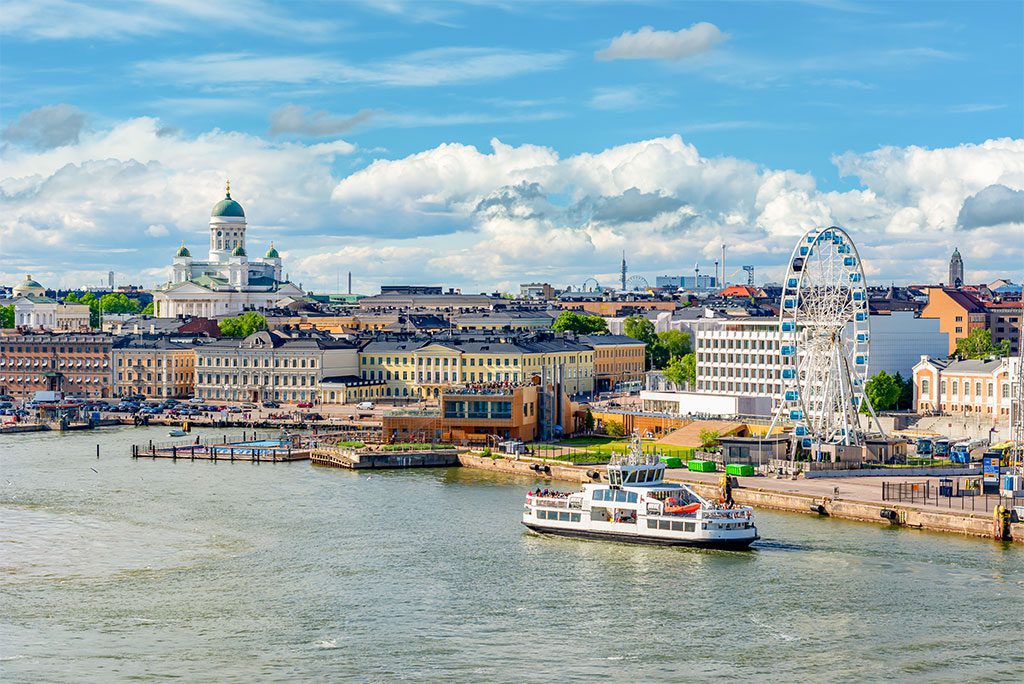
Helsinki, Finland’s capital, is bustling with tourists enjoying reindeer steaks and salmon burgers at the waterfront market. We take in the sights of the city’s old neighborhoods, including Central Station and its imposing stone statues, before making our way to Oodi, a library that is an architectural triumph of glass, steel, and wood. The front desk is loaning out footballs so kids can play outdoors on a Sunday afternoon as a female gymnastic and dance pair performs upstairs (with no one attempting to mute the sound).
Day 9 – Hamina, Finland

Hamina, a charming New England–style town in Finland located 25 miles from the Russian border, is the closest we get to St. Pete; the distance between the two cities is 150 miles, which is close enough for road signs. The steep rapids of the River Kymi provide the setting for the next stop on our journey, the picturesque Langinkoski. Formerly the vacation house of Russian Emperor Alexander III, the Imperial Fishing Lodge is now a museum. In keeping with the theme, he and his family would set sail from St. Pete aboard the steam yacht Tsarvenna to engage in leisurely pursuits like salmon fishing and eating simple food.
Day 10 – Stockholm, Sweden
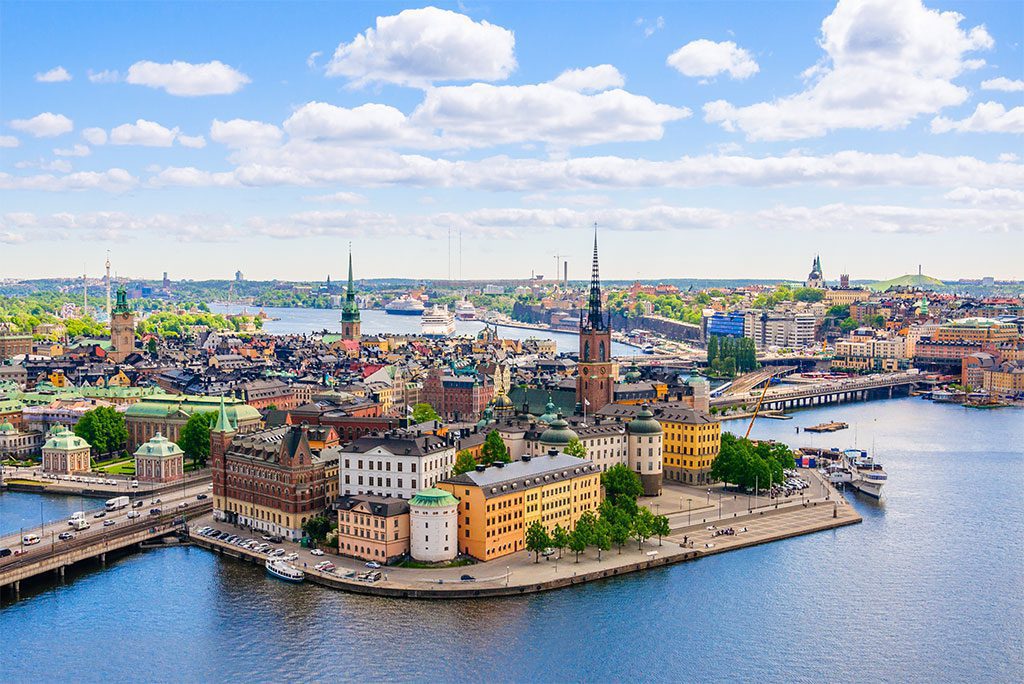
This is our last day, and after a lengthy journey through islands and forests, the Swedish city of Stockholm looks magnificent as we get closer. We decided to visit the Abba Museum by walking along the water’s edge, despite the Vikings’ long and storied presence in the area. Although it has been open since 2013, it is now more popular than ever, requiring pre-purchased tickets and prior reservations to avoid long lines. Although the sing-along booths provide a strange contrast to the Baltic’s historic appeal, the members’ pre-Abba musical career in the late 1960s, as shown in both word and film, provides an intriguing counterbalance. Evening brings a small boat tour of the canals, a calming finish to a nonstop circle of the Baltic, where worries for the peace of Europe are never far from the surface, but the streets and attractions remain as packed as ever.


